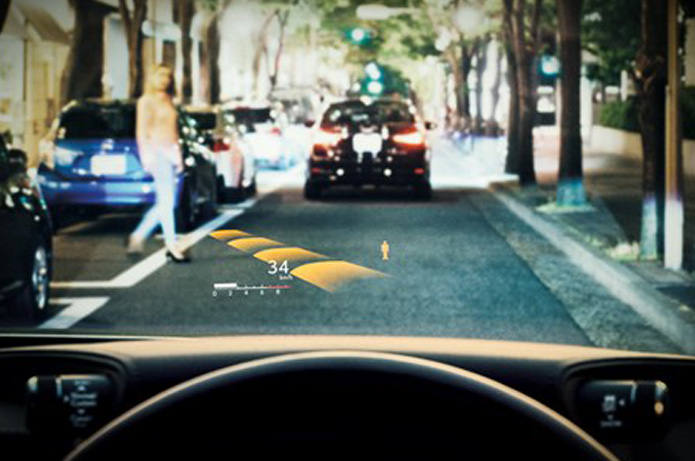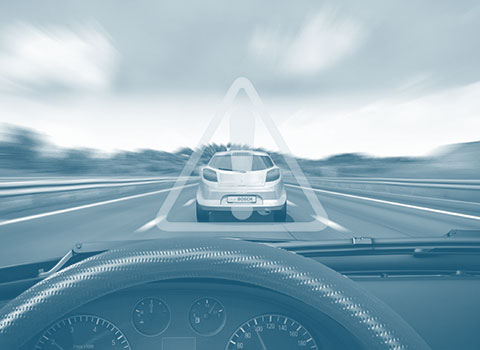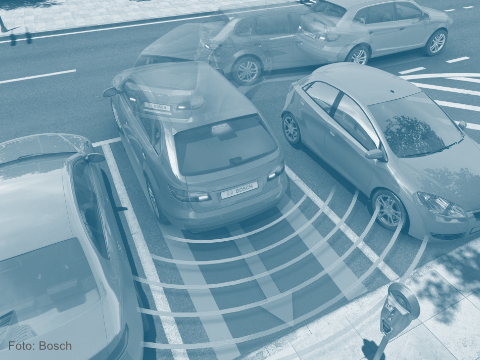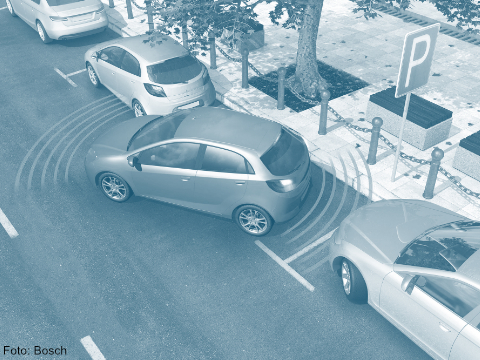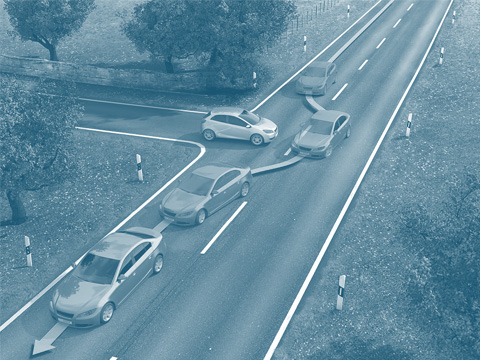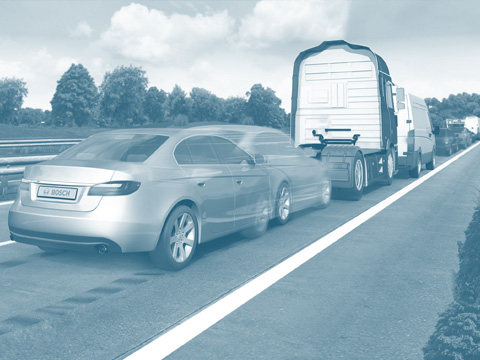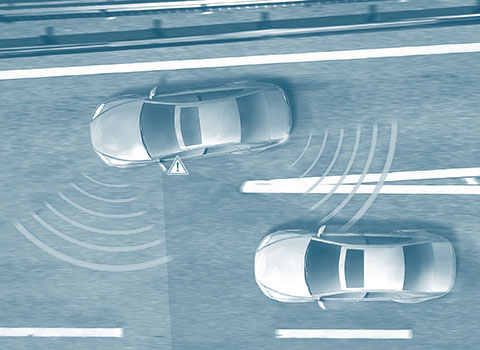Head-up display
Head-up displays enable the projection of important information without the driver having to look away from the road. You find them being used more and more – including in more compact vehicles.
Function
A head-up display (HUD) shows vehicle and traffic information directly in the area of the windscreen. With a windscreen HUD, you get the impression that the display is two to three meters away in the field of vision directly in front of the bonnet. This provides drivers with more intuitive access to relevant data, without having to change their viewing direction. Depending on the version, the display system can show more than just basic information like speed limits and current speed. For example, with the help of external sensors, it is also possible to display the location of pedestrians. Navigation instructions are another advantage: for example, the technology can assist the driver when turning corners at cross-roads through the overlay of an arrow which indicates the correct lane. The head-up display can also control the relative location and colour of the displayed information, and use other optical effects during the projection without hampering the driver. The system consists of a transmissive TFT display, a mirror system and a bright LED light source in the inside of the dashboard. The light intensity is permanently regulated depending on the brightness of the background. In this way, the display is always easy to read, even if the light conditions keep changing. Head-up displays were originally used in the aviation industry, and had been for decades – undergoing continuous improvements along the way. Then, in 2004, BMW became the first European vehicle manufacturer to adapt it for mass-produced vehicles.
Versions
In addition to the windscreen head-up display, there are other versions:
Combiner head-up display
In combiner head-up displays, information isn’t projected onto the windscreen, but onto a small, extra plastic disc in front of the windscreen.
Augmented reality head-up display
In an augmented reality head-up display, the display is completed by an additional display level. Here it seems as if the information from the augmented reality HUD were a direct part of the real driving situation in front of the vehicle.
Safety
To read an instrument panel, you have to take your eyes off the road at least for a brief while, and your eyes need to adjust to the shorter visual distance (accommodation). Only then do you start to see the information. After this, the reverse process occurs: Your eyes have to adjust back to the greater visual distance of what is happening on the road. This process takes time and tires the eyes if it occurs often. With a conventional instrument panel, reading the display, inclusive of two occurrences of accommodation, takes at least half a second. When driving at a speed of 120 km/h, averting your eyes for one second equates to a “blind flight” of around 33 m. With a head-up display, the driver receives all of the relevant information exactly where it is really needed: directly in the line of vision. Due to the fact that drivers can continue to look at the road, head-up displays increase safety.

